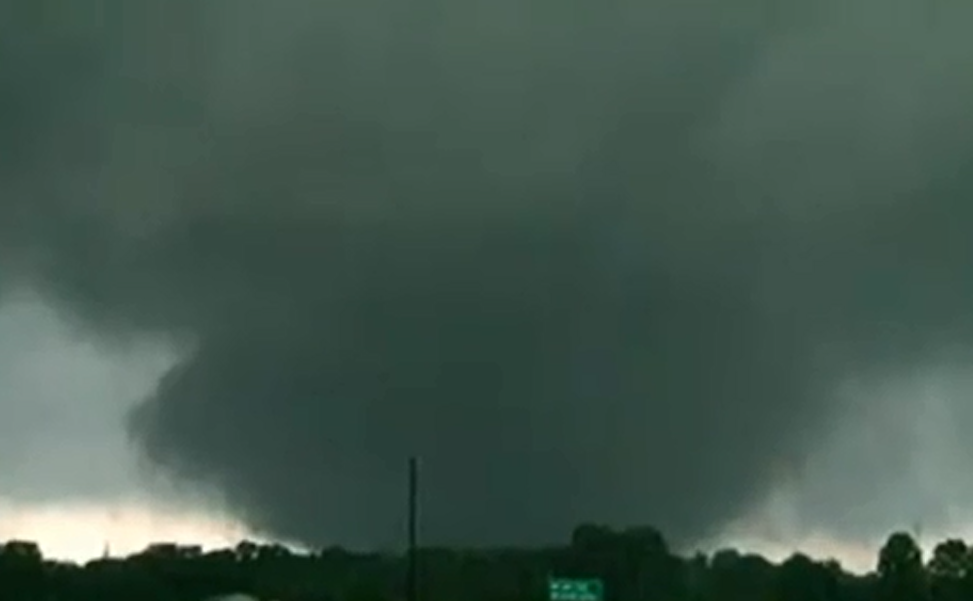Eight months since a string of tornadoes struck East Texas, families and communities are continuing to rebuild what was destroyed. In doing so, they've created a foundation that should help small towns better know how to respond to disasters.
In response to tornadoes that left four dead and hundreds homeless, the Texas Chapter of the American Planning Association and the University of North Texas’ School of Public Health launched Planners4Health.
Melissa Oden, immediate past president of the Texas Public Health Association and an adjunct professor at the University of North Texas’ School of Public Health, is coordinating the project.
Planners4Health is a collaboration of the University of North Texas, American Planning Association, Texas Public Health Association and NET Health, the region’s public health district.
Student researchers specializing in social work, public health and community planning went to Van Zandt County, one of the hardest hit areas, and documented damage, talked to victims and met with officials to identify immediate needs following the storms and the steps for long-term recovery.
Their findings will be incorporated into a disaster preparedness and recovery tool kit to be published in 2018. The document is designed to help rural communities put in place procedures and line up resources to respond quicker and more efficiently when disaster strikes.
The project is being funded with a grant from Centers for Disease Control and Prevention.
It can take months, sometimes years, for small communities to fully recover from devastating events, such as the tornadoes that hit East Texas and Hurricane Harvey that crippled small towns along the Texas Gulf Coast, Oden said.
“We found that helping rural communities was a niche that needed to be filled,” she said. “They often don’t have the resources that cities do and don’t know what all that can be done to get back on their feet.”
On April 29, seven tornadoes struck parts of Van Zandt, Henderson, Rains and Hopkins counties. It was one of the largest outbreaks of tornadoes in recent history.
Four people were killed and about 60 suffered injuries severe enough to need emergency care. Hundreds were left with homes that were destroyed or too heavily damaged to live in.
Oden said that Van Zandt County’s recovery efforts were hampered because officials did not have a nonprofit organization with procedures to accept and distribute funds for victims.
Van Zandt County faced a steep learning curve in setting up a long-term recovery plan, said Russell Hopkins, president of the Van Zandt County Long-Term Recovery Committee and director of Public Health Emergency Preparedness for Tyler-based NET Health.
The recovery committee was formed by the county judge in the days after the tornadoes struck. It initially did not have its own nonprofit status, members or bylaws. It did not have procedures for making sure that the donations that came pouring in the days after the storms went to victims.
The committee was put in charge of distributing donations made to an account at Ben Wheeler State Bank established for storm relief and verifying the needs of victims seeking funds. Legal steps and checks and balances had to be put in place to ensure accountability and fairness, he said.
If this work had been done in advance, money could have been distributed to victims quicker, he said.
From the beginning, the Long-Term Recovery Committee was committed to ensuring that all the donated money went to victims, he said.
The committee partnered with Catholic Charities and the Salvation Army, which continue to take applications from storm victims seeking money. Requests are forwarded to case managers who document needs from those seeking funds. Sometimes victims must submit multiple bids from licensed contractors for repairs before receiving funds.
Case managers forward their reports to the committee, made up of volunteers, which decides how much money to award applicants. Applicants are assigned identity numbers to ensure that committee members do not know who is receiving the money.
Hopkins acknowledged that the process has frustrated some donors, who expected their donations to quickly go to help those in need, as well as those who quickly needed financial help to repair their homes.
The majority of the money donated to the tornado relief bank account is still undistributed, records show.
The account, as of earlier this year, had received $530,000 but only $140,000 had gone to victims.
“It is a slow process by design,” Scoggins said.
Those who need help rebuilding homes and did not have insurance or other financial support, are given the highest priority for receiving money, Scoggins said.
Oden said that the Van Zandt County Long-Term Recovery Committee is following procedures for distributing relief funds recommended by national and state disaster recovery planning groups.
She said that accountability and transparency are keys to maintaining trust within their communities that relief donations are being properly spent.
The tool kit will guide rural communities on steps to take, such as forming a relief committee, before disaster strikes and how to maneuver through long-term recovery.
Earlier this year, Planners4Health sponsored a meeting in Canton during which dozens of groups involved with the storm recovery shared their challenges and concerns.
Oden said it was important to gather all those involved in recovery so the groups could find ways to better work together.
The tool kit will advise rural communities to put partnerships in place that can quickly come together to respond to a disaster, she said. The responders typically include nonprofit organizations, volunteer groups, service clubs, disaster response professionals and government resources on the local, state and national levels.
“We are trying to get people to realize through the tool kit that you need to have this (preparation) in place now. ... When it is sunny you don’t think a disaster is going to happen to you but that is the time to put it (a plan) in place,” Oden said.
Oden said rural areas often face unique challenges, such as inadequate temporary housing for victims, getting to remote areas for cleanup efforts and dealing with livestock.
It would have helped Van Zandt County to have had a source officials could have turned to for the “best practices” of relief recovery, Russell said.
The response by officials in Van Zandt County to the tornadoes forms the case study for the tool kit, Oden said.
“What we have tried to do is to tell the Canton (tornado recovery) story with respect and to use it to raise awareness,” Oden said. “We want other rural communities to ask, ‘Where are we now (in terms of disaster preparedness) and where do we really want to be.’ The more we can raise awareness the more we can plant seeds that can be reaped down the road.”


